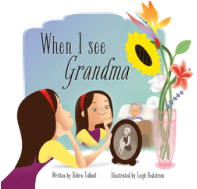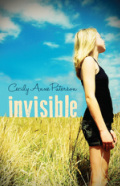 Thank you to Debra Tidball for inviting me to be part of the 'Writing Processes Blog Tour'. Debra is the author of When I see Grandma, illustrated by Leigh Hedstrom. This is her first book, published in March by Wombat Books. Have a look at Debra's post for the 'Writing Processes Blog Tour'. |  |
What am I working on?
What I'm meant to be working on, is my third book in the DynaMites Music series. The first has just been published, second one about to go to the printer, and the deadline for the third one is coming up. And I am working on it, I really am. Honest.
DynaMites is a church music program for preschoolers, so it involves more programming than real writing. I've finished the exciting part, the programming, and now I'm setting it out neatly and checking list after list of songs, books and resources so I can send it to the editor. Dead boring work.
What I'm spending more time on is manuscripts for board books on the same themes as the program I've written. I can't find the sort of books I would like to recommend to go with the program and I'm overflowing with ideas of my own.
I'm also working on plenty of other manuscripts for picture books. These are stories which I will submit to mainstream publishers. The one on my mind right now is an Anzac Day story.
What I'm spending more time on is manuscripts for board books on the same themes as the program I've written. I can't find the sort of books I would like to recommend to go with the program and I'm overflowing with ideas of my own.
I'm also working on plenty of other manuscripts for picture books. These are stories which I will submit to mainstream publishers. The one on my mind right now is an Anzac Day story.
How does my work differ from others of its genre?
My Hey! series is FUN. It doesn't seem worth writing a children's book unless I can see it being a child's favourite. I aim to write books which have an element of surprise or something to make a child laugh. I want my books to have a natural message without being overly didactic. I also want to write books which work well with a group, such as at a playgroup or music group.
DynaMites Music is the only Australian church music program for preschoolers which has been published, as far as I know. The songs I have used are available on itunes and I suggest lots of fun resources such as a variety of percussion instruments, dancing ribbons and boomwhackers. I think parachute games are a must for every week - every session ends with a few parachute songs.
DynaMites Music is the only Australian church music program for preschoolers which has been published, as far as I know. The songs I have used are available on itunes and I suggest lots of fun resources such as a variety of percussion instruments, dancing ribbons and boomwhackers. I think parachute games are a must for every week - every session ends with a few parachute songs.
Why do I write what I do?
I have all these ideas, and I have to do something with them.
I love writing picture books. Some of my stories are simply for the fun of it, and others are more meaningful to me. Creating new characters and stories is satisfying, and I love the challenge of making the story work and the sport of attempting to get it published.
The Christian books have the added dimension that I am benefiting others in a deeper way, if they can learn about God through my books. I'm more practical than artistic, and I'm motivated to create resources which others can use.
I love writing picture books. Some of my stories are simply for the fun of it, and others are more meaningful to me. Creating new characters and stories is satisfying, and I love the challenge of making the story work and the sport of attempting to get it published.
The Christian books have the added dimension that I am benefiting others in a deeper way, if they can learn about God through my books. I'm more practical than artistic, and I'm motivated to create resources which others can use.
How does my writing process work?

I begin with writing ideas in a notebook. If I don't write them down, I forget them. Picture book idea month is fantastic for inspiring ideas. Usually it's only half an idea, but I write it down anyway, and hope that it will match up with another half-idea.
When I have a chunk of time, I sit down and write a first draft. I often do this at the computer, but I love doing it sitting on the beach. I don't care if it's terrible, because nobody else will read it. At least I then have something to work on.
When I have a chunk of time, I sit down and write a first draft. I often do this at the computer, but I love doing it sitting on the beach. I don't care if it's terrible, because nobody else will read it. At least I then have something to work on.

I'm a slow thinker, but that doesn't seem to matter when writing picture books . I write a gazillion drafts with teensy changes. I enjoy the rewriting, because it feels like solving a puzzle, and it's satisfying to see the manuscript get better and better. I also love my writers' group. They tell me what isn't working in the story and I always come home from our meetings feeling inspired.
When I think the manuscript is the best it can possibly be, I usually make up a dummy. It always looks lame. This isn't for anyone else to see, but I'll let you see a page. The dummy helps me see how the text could fit into a 32-page layout, see more clearly how it might work with illustrations, and whether or not the page turns work well. When I think it's absolutely ready, then I still often keep it for a few months before submitting, so that I can see it again with fresh eyes.
When I think the manuscript is the best it can possibly be, I usually make up a dummy. It always looks lame. This isn't for anyone else to see, but I'll let you see a page. The dummy helps me see how the text could fit into a 32-page layout, see more clearly how it might work with illustrations, and whether or not the page turns work well. When I think it's absolutely ready, then I still often keep it for a few months before submitting, so that I can see it again with fresh eyes.
Next Monday, Cecily, Julia and Ramona will blog about their writing processes.
 Cecily Paterson is the author of the award-winning memoir Love Tears & Autism. She has also published two novels for teenage girls, the first of which, Invisible recently reached the quarter finals of the 2014 Amazon Breakthrough Novel Award. Cecily is married with four children and lives in a teeny tiny tourist town in New South Wales. You can read Cecily's blog here. |
 Dr Julia Cooke is a plant ecologist and writer. Her research investigates the strategies plants use to survive and compete in different environment, and her writing for children is always inspired by nature. Julia is the author of My Little World which focuses on the natural history of Black Mountain in Canberra. You can read Julia's blog here. |
 |  Ramona Davey is a trained primary teacher and children's author. She published her first book The Jersey 12 Days Of Christmas in 2012. As she was born in the tiny island of Jersey (sometimes known as Old Jersey) she likes to include Jersey cows in her stories, even superhero ones! She is not too sure why, but a lot of her manuscripts seem to have a lot of cow pats or bird poo in them. Ramona also draws in her spare time and is taking part in Tania McCartney's 52 Week Illustration Challenge. You can read Ramona's blog here. |



 RSS Feed
RSS Feed
